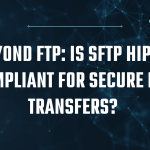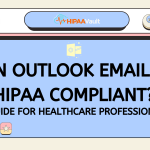On January 15th, 2009, the Department of Health and Human Services (HHS) released the final rules mandating the adoption of the ICD-10 (International Classification of Diseases, Tenth Revision).
Originally, October 1st, 2014 was to be the date that compliance with the latest revision of the medical transaction code set (ICD-10 was mandatory. However, a new regulation from HHS on August 4th, 2014, extended the compliance date to October 1, 2015.
Starting October 2015, ICD-10 will officially launch, and HIPAA-compliant covered entities must be prepared to use the ICD-10 transaction codes. The adoption of the new set of standards has led to a scramble in the healthcare community, with thousands of HIPAA-compliant businesses suddenly needing to retool their processes and workflows to account for the new transaction codes.
Industry estimates the cost of adoption for this new standard could potentially accrue in the range of $14 billion across the board, though most practices are having to spend between $50k to $220k to achieve compliance with these new regulations. Because of the ICD-10 Federal mandate, all health plans, clearinghouses, and healthcare providers that use electronic transactions must transition to the new code set forth.
Per HIPAA requirements, the healthcare industry was mandated to use standard formats for electronic claims and transactions. The Administrative Simplification provision enforces this for covered entities by implementing these new standards. Covered entities must be prepared to utilize these new ICD-10 code sets by the effective date of October 1, 2015.
The new code list for ICD-10 is almost ten times the length of the ICD-9, and is far more detailed. Though some of the codes correspond to equivalents in the new classification, the sheer number of codes has increased dramatically and each individual code is more detailed.
In many cases, there are no direct alternatives between standards at all. The lack of correspondence between the two standards has been the most difficult obstacle in implementation; in searching for data in the ICD-9, it is likely to be in a completely different place than in the ICD-10.
This problem is not an insubstantial barrier, but would most likely require additional searches for the information changes. All those who work in the healthcare field, especially physicians, are expected to be greatly impacted by the adoption of ICD-10.
This transition will involve training, planning, and technological upgrades in order to be prepared for the new code sets in time for the adoption date.
Some physicians have shown apprehension at the new standard, calling ICD-10 a massive unfunded mandate that comes at a time when physicians are trying to meet several other federal technological requirements and risk penalties if they fail to do so.
In preparation, the Centers for Medicare and Medicaid Services (CMS) are performing tests with physicians and other providers to verify that a claim made with the new ICD-10 codes will successfully travel through Medicare’s claim processing. In addition, Medicare will also be performing “end-to-end” testing, in which claims are submitted with the new codes and are tracked from submission to receipt of the remittance.
For HIPAA Compliant hosting providers, the adoption of ICD-10 essentially means business as usual. The implementation is done at the software and process-level for each particular piece of technology; the underlying nature of the hosting environment is unaffected by changes at this level.
However, HIPAA hosting providers do need to be cognizant of the changes that will likely be necessary to the software hosted on their servers. In most cases, updates will be required to all software before the adoption date in order to ensure continued compatibility.
The adoption of ICD-10 is a project at a scale that the healthcare industry has not undertaken for at least 20 years, and will have far-reaching ramifications. It will impact every process and system in the field of healthcare. However, through proper preparation and testing, it is possible to keep the transition relatively painless.



